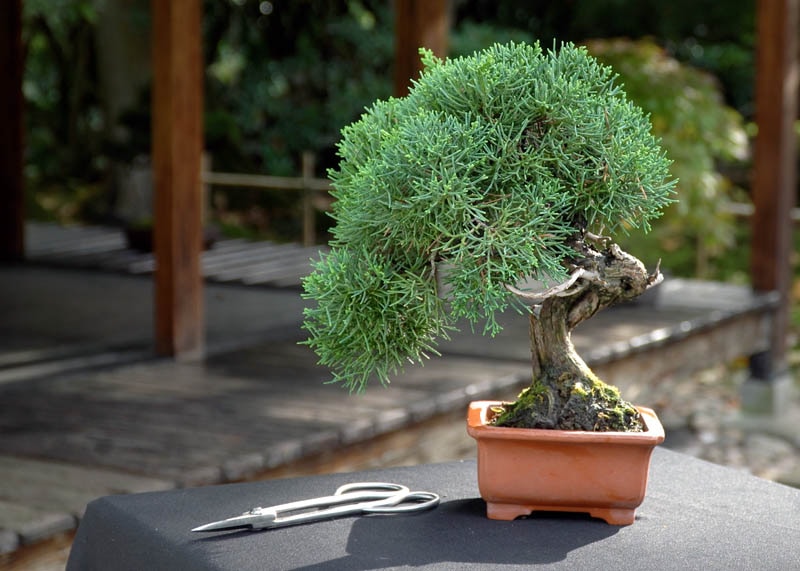The Chinese Juniper Bonsai Tree is a popular choice for bonsai enthusiasts. It is beautiful and easy to care for. This guide will help you understand everything about this amazing tree.
What is a Chinese Juniper Bonsai Tree?
The Chinese Juniper Bonsai Tree is a small version of the Chinese Juniper tree. It is shaped and pruned to stay small. It looks like a miniature version of a full-sized tree. Bonsai is an ancient art form from Japan and China. It means “planted in a container”. The Chinese Juniper is a favorite in bonsai art.
Why Choose a Chinese Juniper Bonsai Tree?
The Chinese Juniper is perfect for bonsai. It is hardy and can live for many years. It has beautiful green needles and a strong trunk. It can be shaped into many styles. These trees look good indoors and outdoors.
Benefits Of A Chinese Juniper Bonsai Tree
- Easy to care for
- Beautiful and elegant
- Can be shaped into many styles
- Long lifespan
- Great for beginners and experts

Credit: www.bonsaiempire.com

Credit: m.youtube.com
How to Care for a Chinese Juniper Bonsai Tree
Caring for a Chinese Juniper Bonsai Tree is simple. Follow these steps to keep your tree healthy and beautiful.
Watering
Watering is important for your bonsai tree. The soil should be moist but not soggy. Check the soil every day. Water the tree when the soil feels dry. Use a watering can with a fine nozzle. This helps to avoid washing away the soil.
Sunlight
The Chinese Juniper needs sunlight. Place the tree in a spot with plenty of light. It needs at least 4 hours of sunlight every day. You can put it near a window or outside. If you live in a hot area, provide some shade in the afternoon.
Temperature
The Chinese Juniper can handle different temperatures. It prefers cool to moderate temperatures. In winter, protect it from freezing temperatures. You can bring it indoors or use a cold frame.
Soil
The right soil is important for your bonsai tree. Use well-draining soil. You can buy bonsai soil or make your own mix. A mix of akadama, pumice, and lava rock is good. This helps the roots get enough air and water.
Fertilizing
Fertilize your bonsai tree to keep it healthy. Use a balanced bonsai fertilizer. Feed the tree every two weeks during the growing season. In winter, fertilize once a month. Follow the instructions on the fertilizer package.
Pruning And Shaping
Pruning and shaping are important for bonsai trees. Trim the branches and needles to keep the shape. Use sharp bonsai scissors. Cut the branches just above a node. This helps new growth to develop. Wiring can also shape the tree. Wrap the wire around the branches and bend them gently. Remove the wire after a few months.
Common Problems and Solutions
Sometimes, your bonsai tree may have problems. Here are some common issues and how to fix them.
Yellowing Needles
Yellowing needles can be a sign of overwatering or underwatering. Check the soil moisture. Adjust your watering routine if needed. Make sure the tree gets enough sunlight.
Pests
Pests can harm your bonsai tree. Common pests include spider mites and aphids. Check the tree regularly for pests. Use insecticidal soap or neem oil to get rid of them. You can also use a soft brush to remove them.
Root Rot
Root rot is caused by overwatering. The roots become mushy and black. To fix this, remove the tree from the pot. Cut away the rotten roots. Repot the tree in fresh, well-draining soil. Adjust your watering routine to prevent this from happening again.
Leaf Drop
Leaf drop can happen if the tree is stressed. This can be due to a change in environment, watering, or temperature. Make sure the tree is in a stable environment. Keep the watering and sunlight consistent.
Repotting Your Chinese Juniper Bonsai Tree
Repotting is important for bonsai trees. It helps to refresh the soil and trim the roots. Repot your Chinese Juniper every two to three years. Follow these steps for successful repotting.
- Remove the tree from the pot carefully.
- Trim the roots with sharp scissors.
- Place a mesh over the drainage holes in the pot.
- Add a layer of fresh soil to the pot.
- Place the tree in the pot and add more soil around the roots.
- Water the tree thoroughly.
Styles of Chinese Juniper Bonsai Tree
There are many styles of bonsai trees. Here are some popular styles for the Chinese Juniper.
Formal Upright
The formal upright style has a straight, upright trunk. The branches are evenly spaced and balanced. This style looks elegant and strong.
Informal Upright
The informal upright style has a slightly curved trunk. The branches are more natural and irregular. This style looks natural and relaxed.
Slanting
The slanting style has a trunk that leans to one side. The branches grow out from the trunk at an angle. This style looks dynamic and interesting.
Cascade
The cascade style has a trunk that grows downwards. The branches hang down like a waterfall. This style looks dramatic and unique.
Windswept
The windswept style looks like the tree has been shaped by strong winds. The branches all grow in one direction. This style looks wild and free.
Conclusion
The Chinese Juniper Bonsai Tree is a beautiful and rewarding plant. It is perfect for beginners and experts alike. With proper care, your tree can thrive for many years. Enjoy the art of bonsai and the beauty of your Chinese Juniper.

